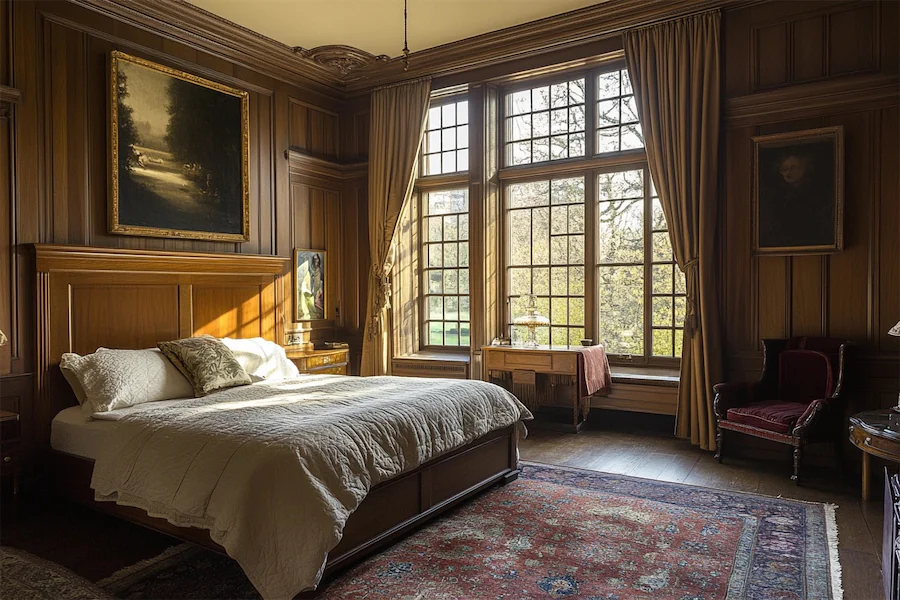Paneled bedrooms have long been a hallmark of interior design, offering both aesthetic appeal and functional benefits. This article delves into the history, key features, applications, and considerations of incorporating paneling into bedroom spaces.
Introduction to Paneled Bedrooms
Paneling involves covering walls with rigid or semi-rigid materials, traditionally wood, to enhance a room’s visual and tactile qualities. In bedrooms, paneling introduces texture, depth, and character, transforming plain walls into focal points that contribute to a cozy and inviting atmosphere.
History and Origins of Paneled Bedrooms
The use of wall paneling dates back to antiquity, initially serving practical purposes such as insulation and protection against dampness in stone buildings. During the Gothic era, particularly in Tudor and Elizabethan periods, paneling became a symbol of luxury, featuring intricate designs like linenfold patterns carved into oak. The Georgian era shifted towards simpler, symmetrical designs, while the Victorian period reintroduced ornate paneling with rich decorations. Over time, paneling evolved from a functional necessity to a decorative element, adapting to various architectural styles and preferences.
Key Features of Paneled Bedrooms
- Material Variety: While traditional paneling utilized woods like oak and mahogany, modern designs incorporate materials such as MDF, PVC, and even fabrics, allowing for a range of textures and finishes.
- Design Patterns: Paneling can be arranged in various configurations, including vertical or horizontal stripes, geometric patterns, and classic square or rectangular layouts, each imparting a distinct aesthetic.
- Color and Finish: The choice of paint or stain significantly influences the room’s ambiance. Dark-stained panels offer a warm, intimate feel, while lighter paints can make a space appear more expansive and airy.
Applications of Paneled Bedrooms
- Accent Walls: Installing paneling on a single wall, often behind the bed, creates a striking focal point that anchors the room’s design.
- Full-Room Paneling: Enveloping the entire bedroom in paneling, known as “wood drenching,” is a trend that wraps the space in warmth and texture, fostering a cohesive and immersive environment.
- Ceiling Treatments: Extending paneling to the ceiling adds architectural interest and can make the room feel more intimate.
Considerations When Choosing Paneled Bedrooms
- Room Size: In smaller bedrooms, opting for lighter-colored paneling or partial wall treatments can prevent the space from feeling confined.
- Maintenance: Different materials require varying levels of upkeep. For instance, wood may need periodic refinishing, while PVC panels are generally low-maintenance.
- Installation: Professional installation ensures precision, especially with intricate designs, but DIY options are available for simpler paneling projects.
Conclusion
Incorporating paneling into bedroom design offers a timeless method to enhance visual appeal and comfort. From its historical origins to modern applications, paneling provides versatility in materials, designs, and finishes, allowing homeowners to tailor their spaces to reflect personal style and architectural preferences.
